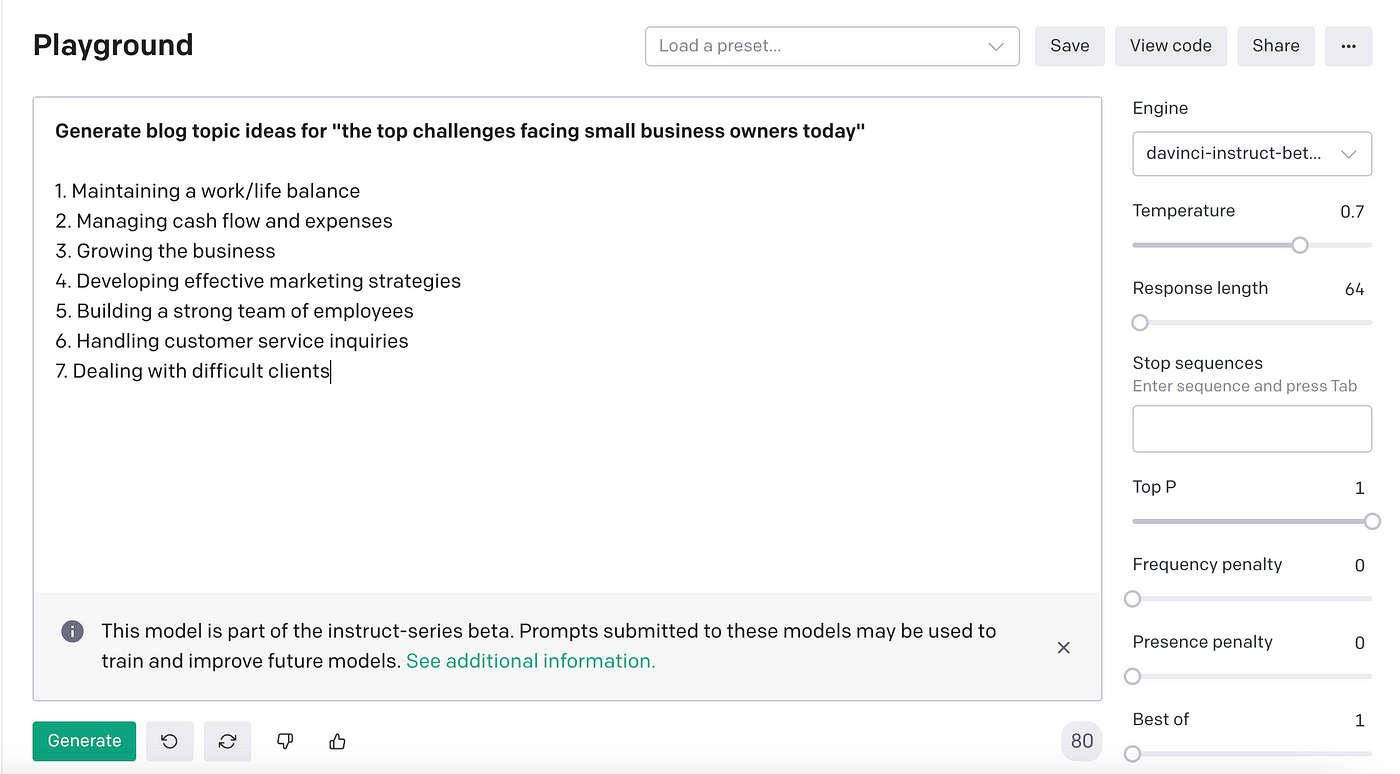How to Create an AI Blog Writing Tool with OpenAI API, GPT-3, and Python
Mục Lục
How to Create an AI Blog Writing Tool with OpenAI API, GPT-3, and Python
Build an AI blog writing tool to create unique blog articles using GPT-3 Artificial Intelligence (AI) API.
In this tutorial, we will pick up where we left off with OpenAI API — and create our very own AI copyright tool that we can use to create unique blog articles with the use of GPT-3 Artificial Intelligence (AI) API.
 Create AI Blog Writing Tool with OpenAI GPT-3
Create AI Blog Writing Tool with OpenAI GPT-3
In this tutorial we will cover the following:
- Using the Online Playground tool to call the API
- Creating the code in Python
- Create a Flask application for the blog writer
Using the online Playground to generate blog topic ideas
This online blog writing tool is going to generate an AI blog in three different steps.
For the playground, we are going to use: davinci-instruct-beta-v3 — AI model to generate our content. So far it works best when it comes to generating unique, blog content for our use case.
Other parameters:
- Temperature=0.7
- Response length=between 100 and 200 characters
AI Prompt — the prompt that you use is the most important part of using the OpenAI API. The prompt tells the AI engine what it should return, it’s a hint of what is required. If you would like to generate blog topics, then you would say so in the prompt, e.g. “Generate blog topics for xxxxxxxx”
Let us get down to it with some examples:
Step 1 — Generate blog topic ideas from a concept. The GPT-3 tool can help you generate completely random, human-readable blog topic ideas using Artificial Intelligence (AI)

Step 2 — Select one blog topic and generate blog section topics that will break down the blog topic into sections that can be expanded later.

Step 3 — Expand on the blog sections, enter a section topic and write a paragraph or two of blog content.

When you combine these three steps above, you have a full AI-generated blog.
Making use of the Prompt
The prompt is what tells the API, what to return — you can enter the use-case, keywords, titles, tone of language, and even the first paragraph of a long story. The AI will think about what should come next, and automatically produce that content for you — until you run out of characters that you have provided the AI.
Creating the Python code
You can immediately copy and paste the code from the playground into your Python file.
The source code is available on our GitHub page here:
The blog.py file will look like this:
Create a Flask Application for the AI Blog Writing Tool with OpenAI API, GPT-3
If you are familiar with Python flask — generate a basic app boilerplate. If you are not sure how just get the code provided in the GitHub repository above.
The contents of the app.py file
The contents of the index.html file.
Fill Youtube Video: Create an AI Blog Writing Tool with OpenAI and GPT-3 Artificial Intelligence
More content at plainenglish.io. Sign up for our free weekly newsletter. Get exclusive access to writing opportunities and advice in our community Discord.















![Toni Kroos là ai? [ sự thật về tiểu sử đầy đủ Toni Kroos ]](https://evbn.org/wp-content/uploads/New-Project-6635-1671934592.jpg)


